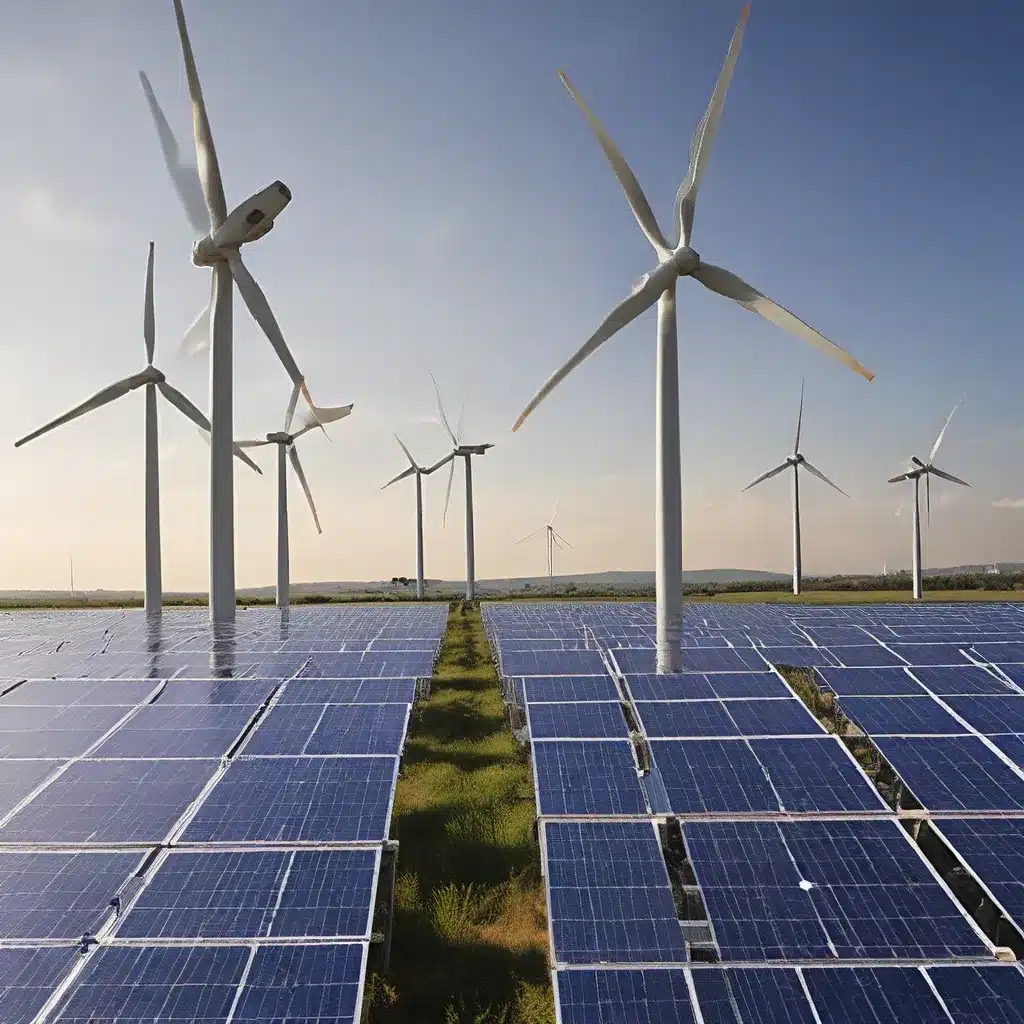
The Financing Landscape: Navigating the Challenges
When it comes to renewable energy, the story isn’t just about the technology – it’s also about the financing. After all, unlocking the full potential of renewables requires substantial investment, and that’s where the real challenges lie. As someone who’s passionate about clean energy, I’ve been on a journey to understand the intricacies of renewable energy financing, and let me tell you, it’s a fascinating (and sometimes perplexing) world.
One of the key issues I’ve encountered is the perceived risk associated with renewable energy projects. Traditional lenders and investors often view these investments as riskier compared to more established fossil fuel projects. This perception can make it challenging to secure the necessary funding, even when the long-term benefits of renewable energy are well-documented.
However, I’ve also discovered some innovative financing solutions that are helping to overcome these barriers. For example, structured finance and risk mitigation strategies are playing a crucial role in making renewable energy projects more attractive to investors. By addressing the perceived risks, these solutions are unlocking new sources of capital and enabling the widespread adoption of clean energy technologies.
But the financing landscape isn’t just about overcoming risk – it’s also about aligning incentives and creating the right policy environment. I’ve found that countries and regions with supportive renewable energy policies and targeted financial incentives tend to see a more robust investment climate for clean energy projects. It’s a delicate balance, but when done right, it can unleash a wave of renewable energy investment that benefits both the environment and the economy.
Emerging Markets: The Untapped Potential
One area that’s particularly intriguing to me is the renewable energy landscape in emerging markets. These fast-growing economies often have vast untapped potential when it comes to clean energy, but they also face unique financing challenges.
Emerging markets typically have higher perceived risks, less-developed financial institutions, and limited access to international capital. This can make it tough for renewable energy projects to secure the necessary funding. But I’ve been encouraged to see how some countries and organizations are working to bridge this gap.
For example, multilateral development banks and impact investors are playing a crucial role in de-risking renewable energy projects in emerging markets. By providing loan guarantees, concessional financing, and technical assistance, they’re helping to catalyze private investment and accelerate the transition to clean energy.
And the potential is staggering. Many emerging markets have abundant renewable energy resources, such as solar, wind, and geothermal, that remain largely untapped. Unlocking this potential could not only boost economic growth and improve energy access, but also significantly contribute to global climate change mitigation efforts.
The Alaska Example: Overcoming Unique Challenges
As I dove deeper into the world of renewable energy financing, I couldn’t help but be drawn to the unique challenges faced by Alaska, a state with immense renewable energy potential but also some of the most daunting barriers to overcome.
Alaska’s remote geography, harsh climate, and dispersed population make it a particularly challenging environment for renewable energy projects. Traditional financing models often fall short, and the state has had to get creative in its approach to unlocking clean energy opportunities.
What I found fascinating was how Alaska has leveraged a mix of public-private partnerships, innovative financing mechanisms, and targeted policy initiatives to drive renewable energy development. From community-owned microgrids to state-supported loan programs, the state has demonstrated that with the right strategies, even the most challenging environments can become beacons of renewable energy progress.
And the results speak for themselves. Alaska’s renewable energy capacity has grown significantly in recent years, with wind, solar, and hydropower playing an increasingly important role in the state’s energy mix. It’s a testament to the power of determined, collaborative, and place-based approaches to renewable energy financing.
Embracing the Opportunities
As I reflect on my journey through the world of renewable energy financing, I’m struck by the tremendous opportunities that lie ahead. Yes, the challenges are real and the barriers can seem daunting. But I’ve also seen how innovative solutions, collaborative approaches, and supportive policy environments are unlocking new pathways for clean energy investment.
From the structured finance and risk mitigation strategies being deployed globally, to the emerging market initiatives that are catalyzing private investment, to the place-based solutions being pioneered in Alaska, the renewable energy financing landscape is evolving in remarkable ways.
And the potential is staggering. Renewable energy not only holds the key to a more sustainable future, but it also represents a vast economic opportunity. By overcoming the financing hurdles and unlocking the necessary investment, we can accelerate the clean energy transition, create millions of jobs, and contribute to a more resilient and equitable global economy.
So, as I look ahead, I’m filled with a sense of optimism and determination. The road may not be easy, but the rewards are immense. And I’m excited to be part of a global movement that’s Unlocking the Opportunities of renewable energy, one financing solution at a time.

